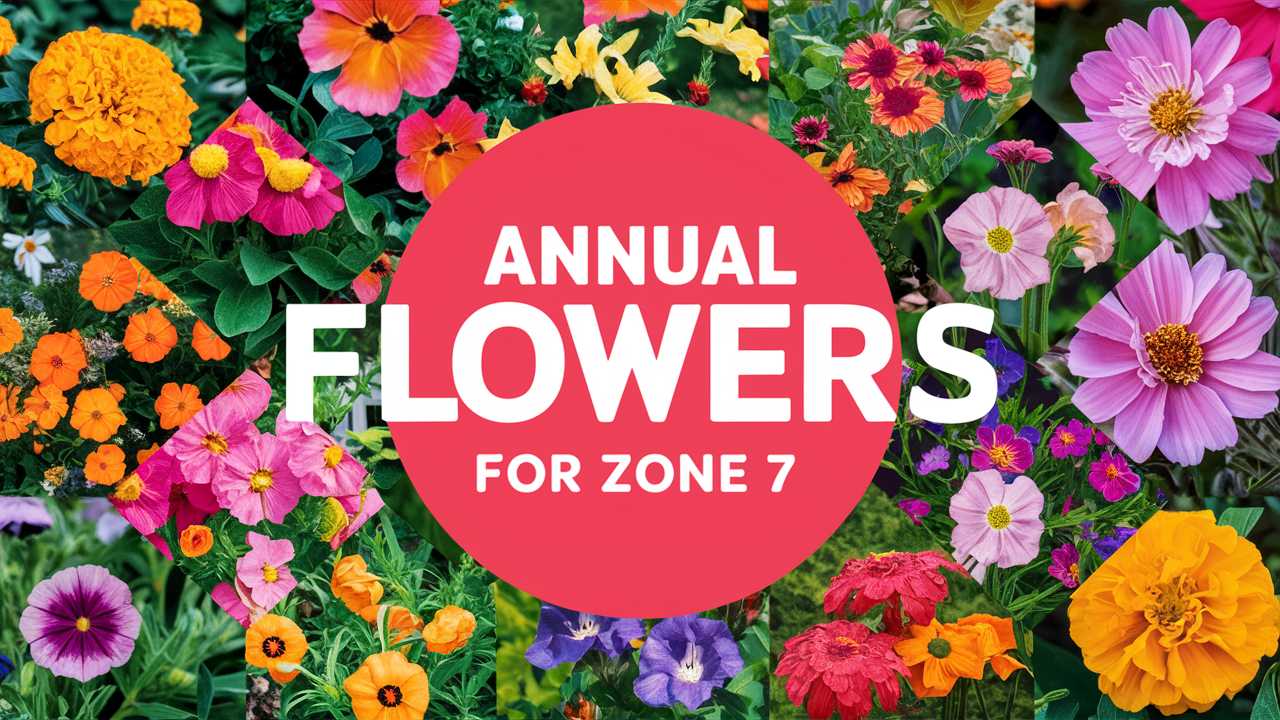In this comprehensive guide, we will explore annual flowers that flourish in Zone 7, providing a roadmap to a flourishing garden bursting with life and beauty.
Understanding Zone 7
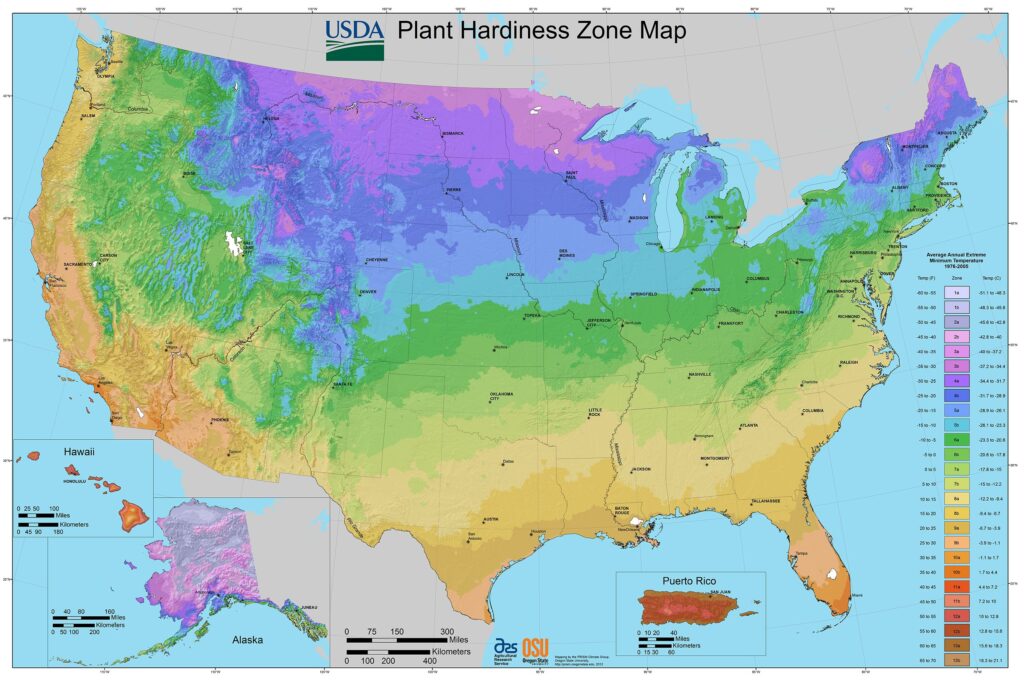
Before diving into the specifics of annual flowers, it’s essential to understand what USDA Plant Hardiness Zone 7 encompasses. This zone typically includes regions with an average annual minimum temperature ranging from 0°F to 10°F (-18°C to -12°C). This relatively mild climate allows plants to grow for an extended season, often extending beyond 200 days of potential growth.
In Zone 7, the spring season arrives early, and the fall season lasts well into late October, providing ample opportunities for gardening. The combination of warm summers, cool winters, and moderate rainfall creates an ideal environment for a broad range of flowering plants. As you select annual flowers, consider not only their hardiness zone but also their sunlight preferences, soil conditions, and water needs. These factors will help create a thriving ecosystem in your garden, allowing you to maximize the beauty and productivity of your space.
Marigolds
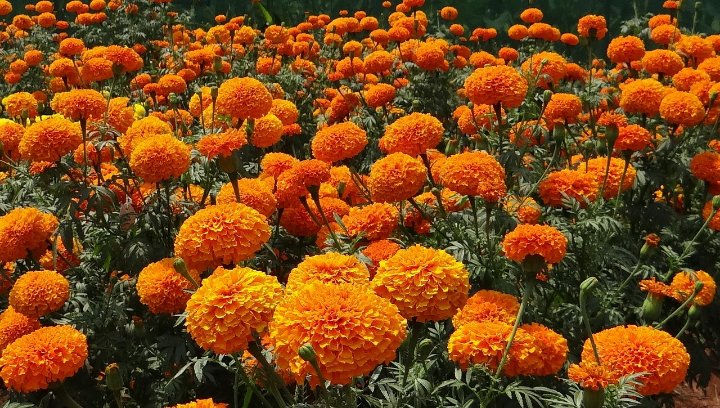
Marigolds, with their sun-kissed blooms in vibrant shades of orange and yellow, are among the most beloved annual flowers. Not only are they visually appealing, but they also serve as practical companions in vegetable gardens by attracting pollinators and repelling harmful pests. Their strong scent deters insects such as aphids and nematodes, making them a natural pest control solution.
These cheerful flowers can bloom from early spring until the first frost, providing a long-lasting show of color. They prefer full sun but can also tolerate partial shade. Marigolds are known for their adaptability, thriving in a variety of soil types, although they prefer well-drained soil. Their growth habit can range from short and bushy to tall and erect, offering versatility in garden design.
When planting marigolds, consider grouping them in clusters to create a bold visual impact. You might explore different varieties, such as the French marigold (Tagetes patula) for compact growth or the African marigold (Tagetes erecta) for larger blooms. For best results, deadhead regularly to encourage more flowering and keep their appearance fresh and vibrant throughout the growing season.
Cosmos

Cosmos are truly delightful annuals that embody a carefree spirit with their delicate, daisy-like flowers. These charming blooms come in a variety of colors, including pink, white, orange, and purple, often with contrasting centers. They are particularly well-suited for cutting gardens because they make lovely arrangements for indoor displays.
One of the great advantages of cosmos is their resilience. They thrive in poor soils and are remarkably drought-resistant once established, requiring little more than full sun to flourish. They are perfect for beginner gardeners or those who prefer low-maintenance options. A typical planting will yield blooms from early summer through frost, ensuring all-season interest.
Deadheading is essential to encourage continued blooming. By regularly removing spent flowers, you promote further flowering and maintain a tidy appearance. Consider planting taller varieties in the back of flower beds or in areas where they can sway gently in the breeze, adding a whimsical touch to your landscape.
Zinnias

Zinnias are among the most popular annual flowers, cherished for their remarkable array of colors, shapes, and sizes. From single blooms to more intricate multi-petaled varieties, zinnias can infuse any garden with vibrant cheer. They thrive in full sun and are remarkably easy to grow, making them an excellent choice for new and experienced gardeners alike.
One of the distinctive features of zinnias is their sturdy stems, which makes them ideal for cutting gardens. When cut, they can last up to a week in arrangements, bringing the garden to your table. Zinnias come in shades ranging from bold reds and oranges to soft pastels, giving you countless opportunities to mix and match.
These flowers prefer well-draining soil and regular watering, especially in extremely hot conditions. To encourage more blooms, practice deadheading by removing faded flowers regularly. Plant zinnias in blocks rather than scattered to create stunning visual impact, and watch as your garden becomes a magnet for butterflies, adding movement and life to your outdoor space.
Petunias
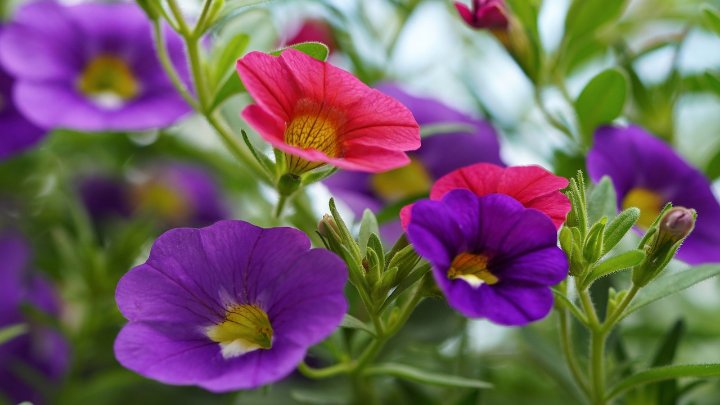
Petunias are continua l favorites for gardeners due to their fragrant blooms and rich variety of colors and patterns. These versatile annuals can be found in traditional solid hues, wild stripes, and even frilly variants. They are perfect for border plantings, containers, or hanging baskets, where their trailing branches can spill over and create an enchanting effect.
To thrive, petunias require full sun and well-drained soil. They do appreciate consistent moisture, so adequate watering is essential for maintaining their vigorous growth. Petunias can become leggy over time, so regular pruning and pinching back can help maintain fullness and encourage bushier growth.
As you design your garden, consider using a combination of petunia types to create a dynamic and colorful display. Don’t forget to fertilize regularly, as petunias can quickly deplete soil nutrients. When planting in containers, mixing petunias with trailing plants such as lobelia can create stunning arrangements that burst with color and texture.
Sunflowers

Sunflowers stand tall and proud, radiating cheer and warmth wherever they’re planted. They are iconic for their bright, large flower heads that follow the sun throughout the day. Sunflowers come in various sizes—from dwarf varieties perfect for containers to towering species that can reach over six feet tall.
Ideal for full sun, sunflowers thrive in well-drained soil and are relatively low-maintenance. They attract bees and other pollinators, helping to promote a flourishing ecosystem. As an additional perk, sunflowers produce seeds that can be harvested and enjoyed by both birds and humans alike.
Plant sunflowers in groups to make a dramatic impact. They can create a stunning backdrop for shorter flowers, or serve as a picturesque border along walkways. Given their height, be mindful of their placement, ensuring they don’t shade other plants. When planting, consider staggering sowing dates to ensure a continuous display of blooms throughout the summer.
Snapdragons
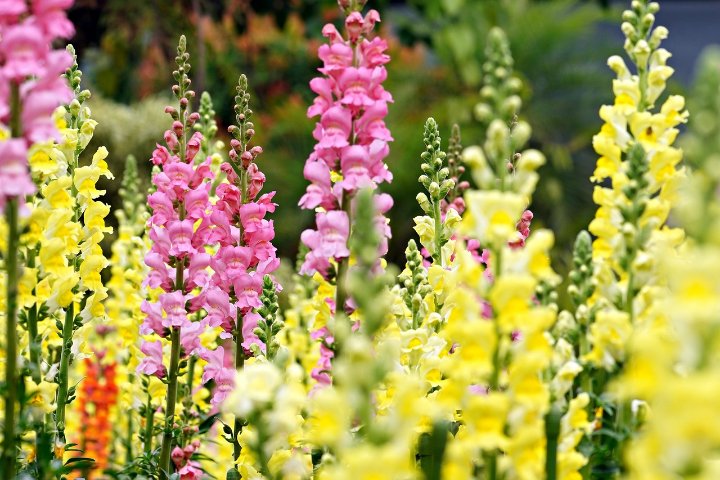
Snapdragons are elegant annuals that can elevate any garden with their striking vertical growth and colorful clusters. Known for their distinctive blooms that resemble dragon mouths, these flowers bring unique architectural interest. Snapdragons come in various heights, making them versatile for borders, mixed beds, or cut flower arrangements.
This plant prefers cooler weather and thrives in well-drained soil with plenty of sunlight. Snapdragons are typically planted in early spring and can continue to bloom throughout fall. Regular deadheading helps promote continuous flowering and keeps plants looking tidy.
For added interest, consider interspersing snapdragons among lower-growing flowers, creating layers in your garden that draw the eye. Snaps also do well in cooler climates, and they can withstand light frost, making them ideal for early spring planting in Zone 7.
Morning Glories
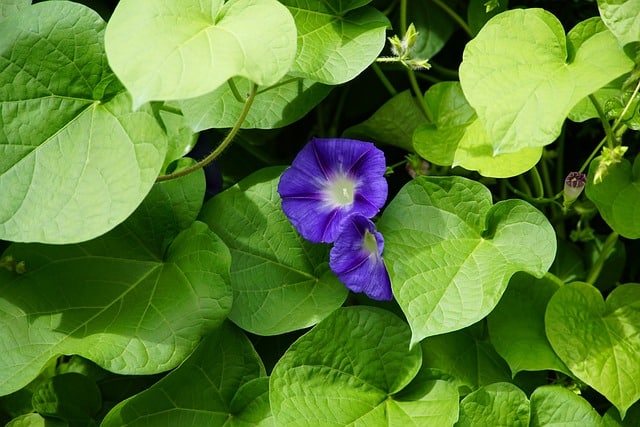
Morning glories are charming annual climbers known for their vibrant trumpet-shaped flowers. They are perfect for trellises, fences, and arbors, adding a whimsical dimension to your landscape. Morning glories bloom in an array of colors, including blues, purples, and whites, which unfurl each morning and close by afternoon.
This plant thrives in full sun and well-drained soil, flourishing when given adequate support. Once established, morning glories can grow aggressively, so keep an eye on their spread and trim them back as needed to avoid encroaching on other plants. They are also resilient to drought, making them low-maintenance options for sunny spots.
Plant morning glories in groups to create a splash of color, but be mindful of spacing since they can cover large areas quickly. As a bonus, these flowers attract hummingbirds and butterflies, enhancing the ecological diversity in your garden. Incorporate them into a cottage-style garden, or use them to add vertical interest against fences or garden structures.
Pansies
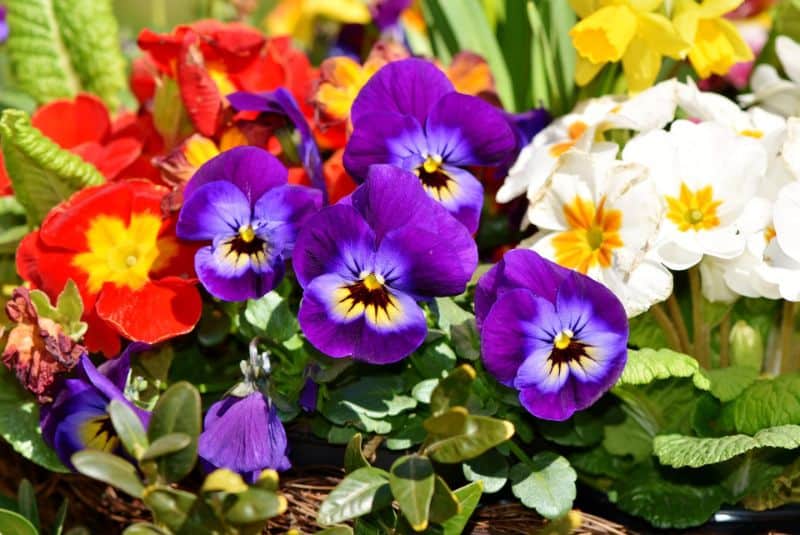
Pansies are vibrant, charming annuals known for their delightful “faces” and rich colors. They are often one of the first flowers to bloom in spring and can come in a remarkable range of shades, including yellows, whites, purples, and blues. They thrive in cooler temperatures and can also flower beautifully in the fall, making them a versatile choice for seasonal displays.
Pansies prefer partial shade to full sun and do best in well-drained, fertile soil. Their ability to withstand cooler temperatures makes them a great option for early spring gardens. In terms of care, regular watering and deadheading will keep pansies healthy and blooming throughout the season.
When designing your garden, consider using pansies as border or edging plants. Their compact growth and bold colors can create picturesque lines and contrast well with taller flowers. Pansies are also excellent for containers and window boxes, bringing vibrant life to patios and balconies.
Bachelor’s Buttons
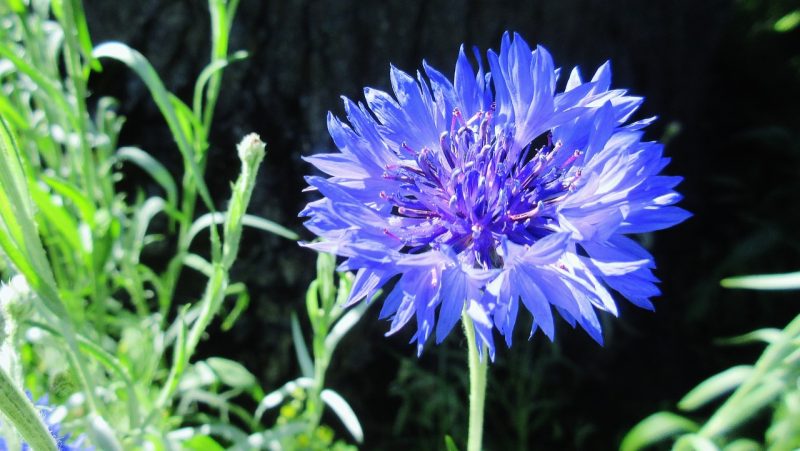
Bachelor’s buttons, commonly known as cornflowers, are delightful annuals that bring a nostalgic charm to gardens. With their vibrant blue and white blooms, these flowers thrive in poor to moderately fertile soil and can tolerate dry conditions, making them incredibly resilient and easy to grow.
These hardy plants do best in full sun and require minimal maintenance, making them perfect for beginner gardeners. They also attract beneficial insects like bees and butterflies, enhancing the biodiversity of your garden. Bachelor’s buttons are great for cut flowers, as their sturdy stems hold up well in arrangements.
When planting bachelor’s buttons, consider mixing them with other annuals in a wildflower or cottage garden style. They provide unique color contrast and add texture to your planting scheme. Grouping them in clusters will create an eye-catching display that captures both nostalgia and charm.
Alyssum
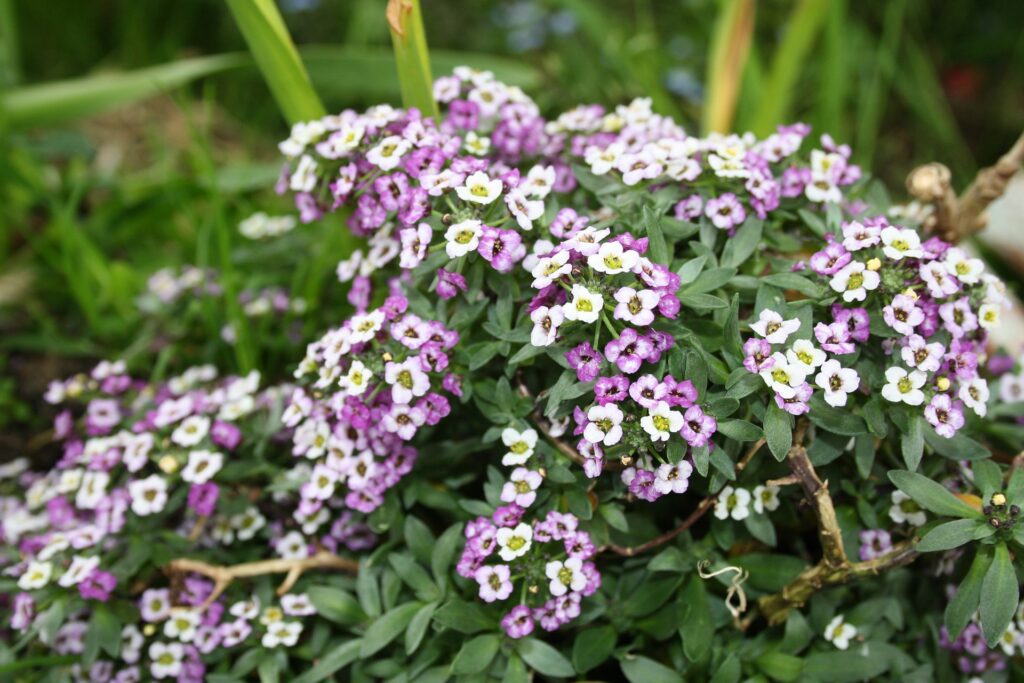
Sweet alyssum is a charming annual renowned for its delicate clusters of tiny flowers and enchanting fragrance. Available in shades of white, pink, and purple, alyssum is perfect for borders, containers, or hanging baskets, where its cascading growth habit can truly shine.
One of the appealing features of alyssum is its ability to thrive in a variety of conditions. It flourishes in well-drained soil, and while it prefers full sun, it can tolerate partial shade. Its reputation for attracting beneficial insects, such as pollinators, makes it a valuable addition to any garden.
For best results, plant alyssum in sunny positions to promote vigorous growth. Regular deadheading will encourage continuous blooms and ensure the plants remain tidy and vibrant throughout the season. Mixing alyssum with taller flowers adds softness and a charming touch to garden beds, while their fragrances offer a pleasant sensory experience.
Coreopsis
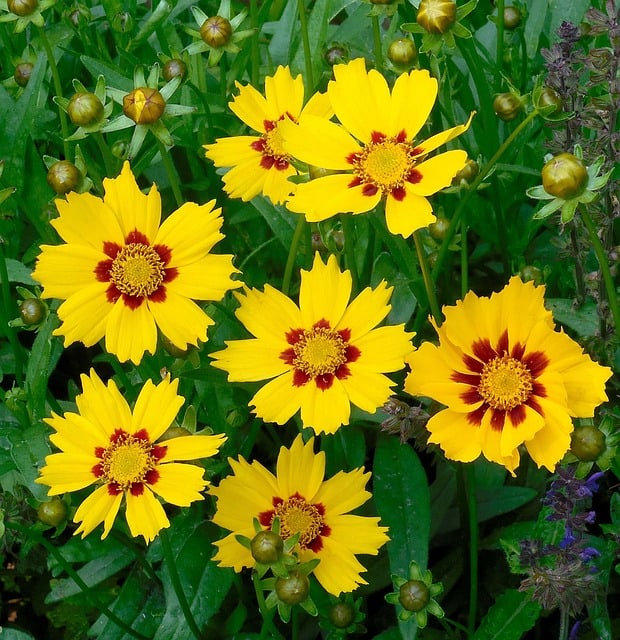
Coreopsis, commonly known as tickseed, showcases sunny, daisy-like blooms that radiate joy and warmth. These perennial favorites are often grown as annuals for continuous flowering throughout the summer months. Coreopsis comes in various shades, predominantly yellow, but also includes reds and bi-color options.
These flowers thrive in full sun and prefer well-drained soil, making them an excellent choice for various garden styles. They are drought-tolerant once established, reducing the need for constant watering. Coreopsis is known for its long bloom time, from late spring into fall.
Deadheading spent flowers encourages more blooms and promotes a tidy appearance. Plant them in blocks or drifts for maximum visual impact, and consider pairing them with other annuals to create vibrant combinations. Coreopsis also attracts butterflies, which adds life and movement to your garden.
Celosia
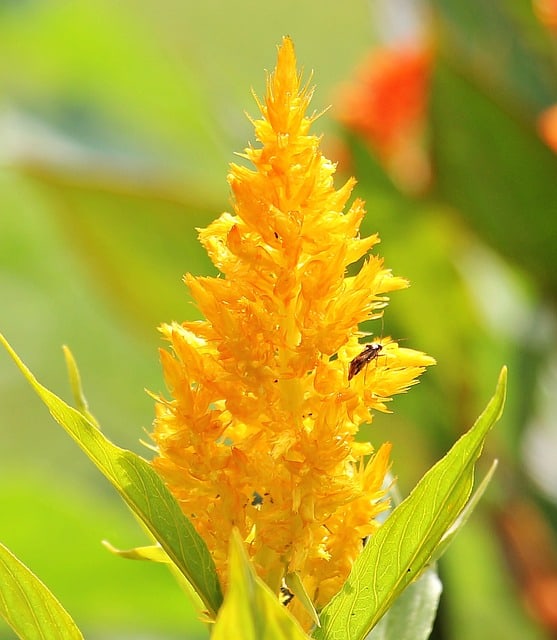
Celosia is a unique annual characterized by its stunning, textured blooms that resemble flames or crests. Available in vibrant shades of red, orange, pink, and yellow, these flowers are a fantastic way to bring an eclectic, eye-catching element to your garden. Celosia can be used in various ways, including as border plants, in mixed flower beds, or as striking cut flowers.
These vibrant plants thrive in warm temperatures and prefer full sun to partial shade. Celosia is tolerant of poor soil and drought conditions, making it a low-maintenance option that’s easy for even novice gardeners to grow successfully. The unique texture and shape of the blooms add contrast to traditional flower beds.
To extend the blooming period, consider planting celosia in clusters and group different varieties together. These flowers can also be dried after blooming, making them an excellent choice for creating everlasting arrangements for winter decor. Their long-lasting blooms will ensure your summer garden transformations can be enjoyed year-round.
Scaevola

Scaevola, also known as fan flower, is an incredible choice for gardeners seeking a cascading beauty for hanging baskets and containers. With its unique fan-shaped blooms in shades of blue, purple, and white, scaevola gracefully spills over the edges, creating a stunning display.
These flowers thrive in full sun and are exceptionally drought-tolerant, making them highly resilient. Their low maintenance requirement makes them ideal for busy gardeners, and their continuous blooming throughout the season ensures your garden remains vibrant. The adaptability of scaevola means it can flourish in various soil types while helping to attract pollinators.
When planting, mix scaevola with other trailing annuals for stunning combinations in containers or hanging baskets. Depending on the variety, scaevola can fill in rapidly, making it a fantastic choice for maximizing beauty in limited space. Whether you’re looking to create a stunning patio display or soften edges in your garden, scaevola is a reliable choice.
Ornamental Peppers
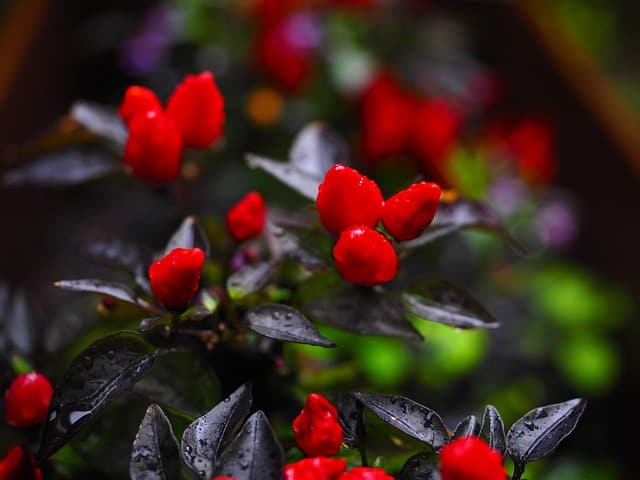
While not a traditional flowering plant, ornamental peppers have gained popularity for their stunning, jewel-toned fruits. These annuals can serve double duty in the garden, showcasing both colorful foliage and striking fruits that bring eye-catching interest. Available in various sizes, shapes, and colors, ornamental peppers can create visual drama in borders or containers.
Ornamental peppers thrive in warm weather and full sun, preferring well-drained soil. They also attract pollinators and birds, enhancing the ecosystem of your garden. While primarily grown for their ornamental value, their fruits are also edible, adding versatility to your gardening choices.
In terms of placement, ornamental peppers can be used effectively in landscaping to create vivid focal points in flower beds. Consider using them along pathways or near outdoor seating areas to draw attention and create a festive atmosphere. Group plants with different fruit colors to create a visually striking display that changes as the fruits mature.
Nasturtiums
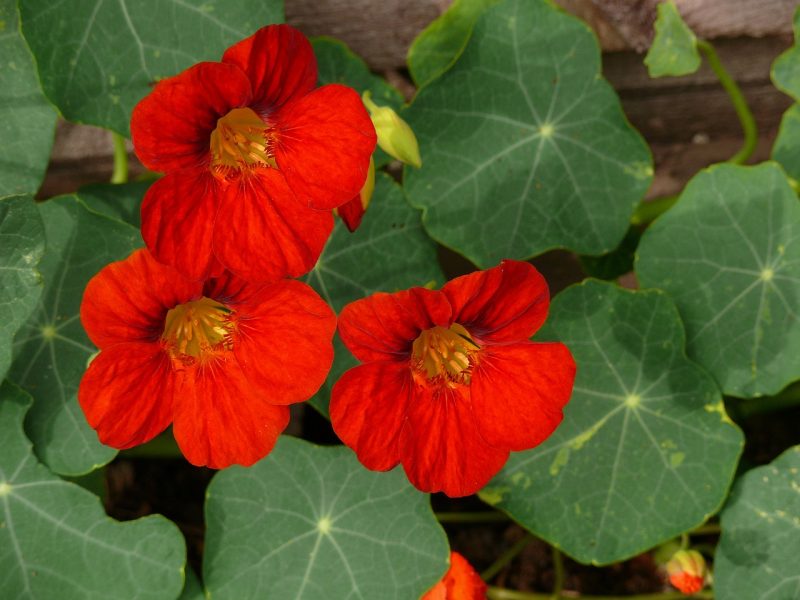
Nasturtiums offer an exceptional combination of beauty and functionality in the garden. With their vibrant flowers and peppery-flavored leaves, these annuals can create stunning displays while serving as a culinary herb. Their wide range of colors, from bold oranges and reds to soft yellows, creates a vibrant tapestry in any garden setting.
Nasturtiums are easy to grow and prefer poor, well-drained soil, which makes them low-maintenance options ideal for novice gardeners. They thrive in full sun to partial shade, and their trailing growth habit makes them perfect for containers, hanging baskets, and garden edges.
Beyond their aesthetic appeal, nasturtiums are also known for attracting beneficial insects, thus playing a role in pest control by diverting aphids and other pests away from more vulnerable crops. When planting, intersperse them throughout vegetable gardens to not only beautify the space but also serve as edible accompaniments to salads and other dishes.
Dusty Miller
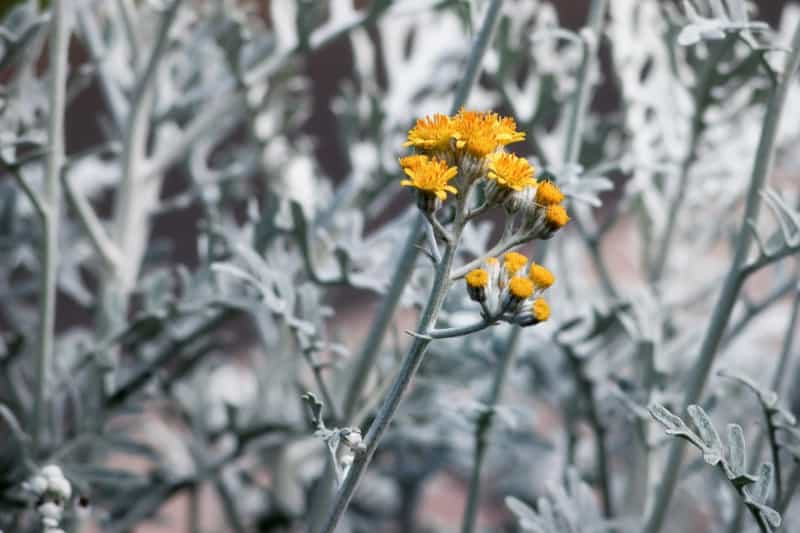
Dusty miller, known for its striking silver-gray foliage, is a beautiful and functional addition to any garden. While often considered primarily for its foliage, dusty miller can produce small yellow flowers that complement other annuals. The soft, velvety leaves create a stunning contrast against more vibrant blooms, making it an excellent choice for edging or foundation plantings.
Dusty miller thrives in full sun and can tolerate heat and drought once established, making it an excellent choice for low-maintenance gardens. It prefers well-drained soil and can act as a filler between showy flowers, providing a soft backdrop that enhances the overall color palette of your garden.
To fully appreciate the beauty of dusty miller, consider using it to frame flower beds or create pathways. Its silvery leaves reflect sunlight, adding brightness to any area, and the foliage offers color and texture, complementing a wide variety of flowers. Dusty miller’s resilience allows it to thrive in challenging conditions, making it a valuable asset for your Zone 7 garden.
Lobelia
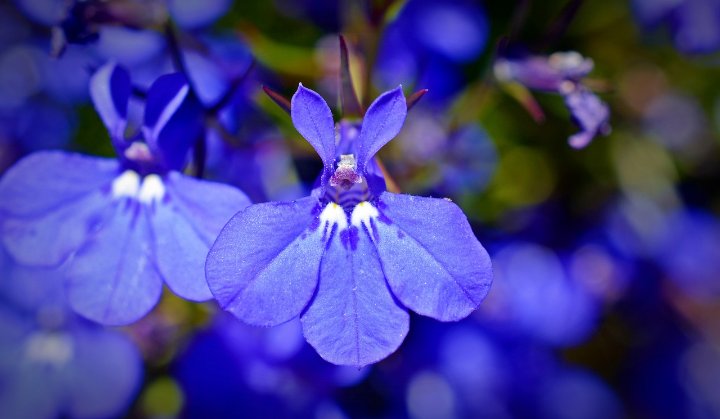
Lobelia is a compact, stand-out annual that adds a beautiful touch to containers and hanging baskets. Its trailing growth habit and vibrant blue, purple, or white flowers create a stunning display that can liven up any garden space. Lobelia does well in cooler weather and, when cared for properly, will bloom from spring through frost.
These annuals prefer partial shade, making them perfect for shadier parts of the garden, like under trees or along north-facing walls. They thrive in well-drained soil and enjoy even moisture, so regular watering is crucial. Lobelia’s cascading flowers provide excellent coverage in container arrangements and can spill over the sides, creating a dripping effect.
When designing your garden, incorporate lobelia alongside taller flowers to create beautiful vertical layers. Nestling them among other trailing plants can make a dramatic visual impact. They also make a lovely addition to window boxes, bringing color right to your doorstep. With lobelia, you can create a dynamic, richly colored garden space.


